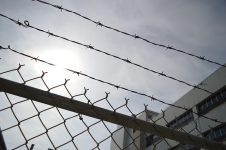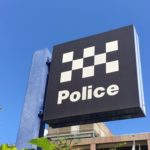Indigenous Australian Locked Up in Detention

In what could be an embarrassing mix-up for Australian immigration authorities, reports have surfaced recently about a 39-year-old Indigenous man wrongfully locked up in detention.
The man, who says his name is Eddie David, is accused by the Department of Immigration and Protection of being an unlawful immigrant from Fiji with the surname of Singh.
But Mr David is adamant that he is an indigenous Australian, hailing from Murray Island in the Torres Strait – and his claims are backed up by the Western Australian Aboriginal Land Council.
Detained Fairly or Unfairly?
David was detained last Friday after his passport was seized by immigration officials, and has been held ever since at the Yongah Hill Detention Centre outside of Perth. He has been told by officials that he faces deportation if he is unable to prove his identity.
At the time of his detention, he had been voluntarily attempting to resolve issues with his passport with the immigration office, which he believed had been wrongly rejected.
David maintains that he is of Indigenous descent – and has recounted an appalling childhood spent in and out of missions around the country as a member of the Stolen Generation. Indigenous experts say that his ability to recall details about these missions adds weight to his claims.
Despite this, the Department of Immigration and Border Protection has refused to recognise his identity as an Indigenous Australian, saying that it had used fingerprint and facial recognition analysis to identify him as an illegal Indian-Fijian immigrant who had arrived in Australia as a child over 30 years ago. The department has also reportedly refused to contact any of the missions disclosed to verify his claims.
The Plot Thickens
To add to the confusion, Mr David says that he has been improperly detained in the past by authorities who believed that he was the same Fijian man.
That incident occurred after he attended a Centrelink office more than five years ago, which resulted in him being locked up at the Perth Immigration Detention Centre for several days – after which he was released without an apology.
Unfortunately, David has few means to prove his true identity. The passport seized by authorities was his only form of identification other than a learner driver permit. He says that his birth certificate and other identity documents were misplaced or destroyed as he was moved between different missions during his youth.
A spokesperson from the South West Aboriginal Land and Sea Council (SWALSC), which has been assisting in trying to reconnect David with his family, says it is ‘not uncommon for members of the stolen generation to have no identity documents.’
The organisation has backed Mr David’s claims that he is of Aboriginal descent, and even signed off on documents confirming his Aboriginality when he applied for his Australian passport, stating that he had satisfied the organisation’s cultural values and protocols.
Mr David’s employer, Daryl Rogers, also supports his claims, saying that he is sure that his is Indigenous. Rogers has been assisting immigration officials with their inquiries.
Similar Cases
Mr David’s case draws striking parallels with other recent botched immigration cases – including the highly publicised case of Cornelia Rau.
Ms Rau was a German national and permanent resident of Australia who was unlawfully detained by the Australian government for 10 months between 2004 and 2005.
The trouble began after she discharged herself from Manly hospital in March 2004 where she was being treated for schizophrenia. She later turned up in Queensland, where concerned locals took her to the police.
Ms Rau claimed that she was a German tourist, and gave police various false names. She was detained on that basis as an unlawful non-citizen at the Brisbane Women’s Correctional Centre because there were no immigration detention facilities in Queensland at the time.
Rau’s mental health rapidly deteriorated whilst she was in custody, but despite this she was frequently left in solitary confinement. She was later sedated, restrained and transferred to Baxter Immigration Detention Centre in South Australia.
Authorities reportedly ignored numerous recommendations by mental health professionals that Rau be placed in more suitable accommodation so that her mental state could be monitored, as well as concerns about her true identity.
It was only after Rau’s family reported her as missing to the police, and friends recognised her photo in media reports, that the truth came out. She later received compensation from the Australian government of $2.6 million for the abuse suffered whilst she was wrongly detained.
The case sparked the Palmer Inquiry into Rau’s detention, as well as the wrongful deportation of another woman, Ms Vivian Alvarez, to the Phillipines.
That Inquiry found that there were major problems with the immigration detention system, particularly with regard to the treatment of those within the system who suffer from mental health conditions.
George Newhouse, an Australian human rights lawyer who represented Ms Rau during her 2007 court proceedings, has taken on Mr David’s case and vowed to fight it all the way to the High Court if necessary.
Mr Newhouse has raised concerns about Mr David’s situation, particularly in light of his special vulnerability as an Indigenous Australian. He has written to the government demanding David’s release – and has threatened legal action if the demand is not met.






